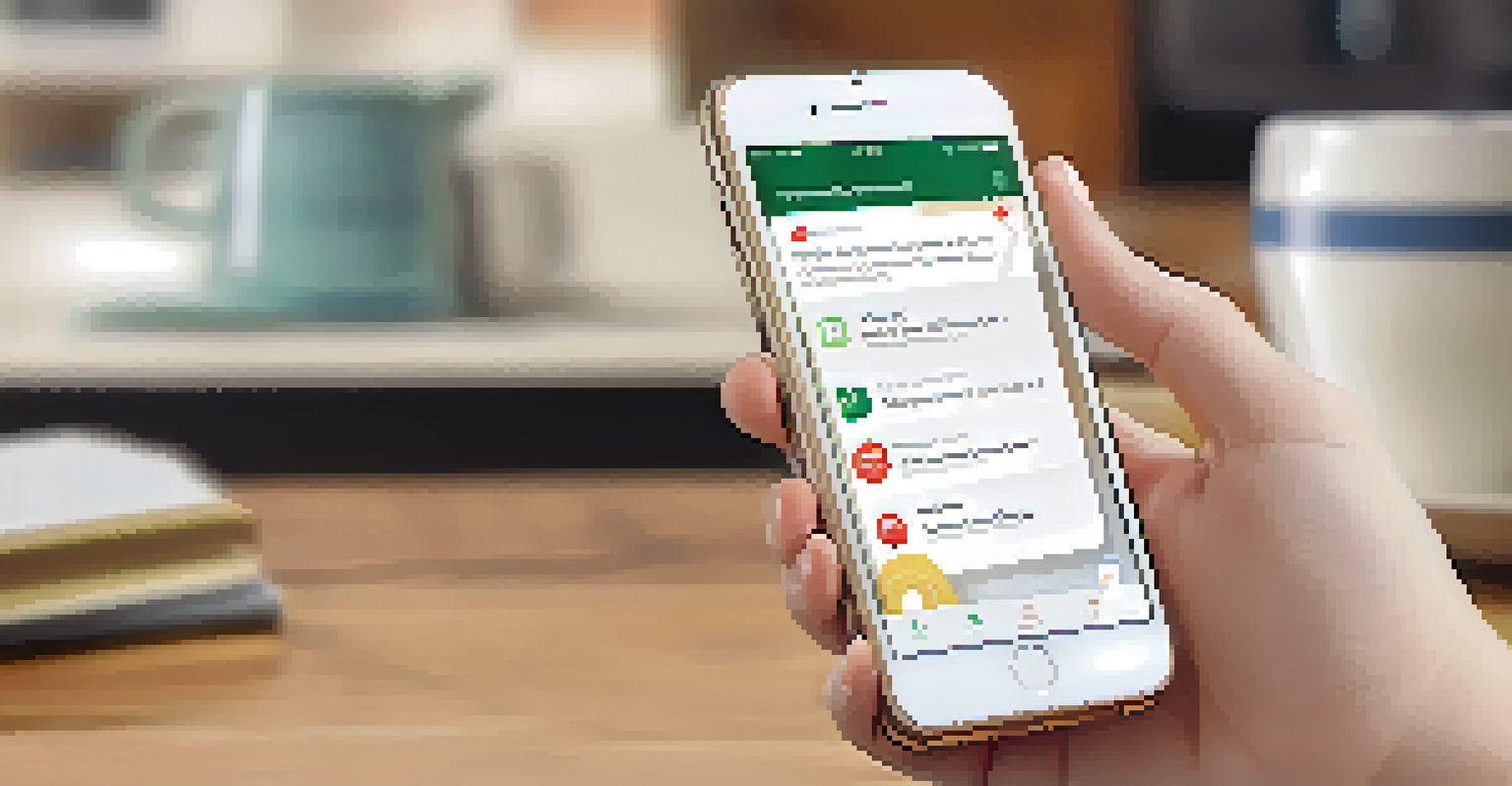Emergency Contact Lists: A Must for Crisis Travel Planning

Understanding the Importance of Emergency Contact Lists
When traveling, having an emergency contact list can be a lifesaver. It's a simple yet effective tool that ensures you're prepared for unforeseen situations. Whether it's a medical emergency, lost passport, or natural disaster, knowing whom to contact can make all the difference.
In an emergency, every second counts.
An emergency contact list provides peace of mind, not just for you but also for your loved ones. Imagine being in a foreign country and needing help; having key contacts at your fingertips can alleviate stress in high-pressure situations. This list can include family, friends, and even local emergency services.
Moreover, an effective emergency contact list can save precious time. In emergencies, every second counts. With essential numbers readily available, you can focus on addressing the situation rather than scrambling to find help.
Who to Include in Your Emergency Contact List
Creating an emergency contact list starts with deciding who to include. At the top of the list should be close family members, as they can provide immediate support. It’s also wise to include friends who are familiar with your travel plans and can help if something goes awry.

Don’t forget to add important local contacts: your country’s embassy or consulate, local police, and medical facilities. These contacts can be invaluable in emergencies, especially if you are in a country where you don't speak the language. Having their numbers ready can expedite the help you might need.
Create a Comprehensive Contact List
An emergency contact list should include family, friends, local services, and your travel insurance provider for effective support in crises.
Lastly, consider including a travel insurance provider. If you face significant issues like medical emergencies or trip cancellations, knowing how to reach your insurer can alleviate a lot of stress. Make sure these contacts are saved in both your phone and a printed copy.
How to Organize Your Emergency Contact List
Once you’ve identified your contacts, organizing the list is crucial. Start by categorizing contacts based on their roles, such as family, friends, and local services. This way, you can quickly find the right person to call in a particular situation.
The best preparation for tomorrow is doing your best today.
You might want to format your list clearly, with names, relationships, and phone numbers easily visible. Consider using bullet points or a table layout to enhance readability. The easier it is to read, the quicker you'll be able to act in an emergency.
Additionally, keep your list updated. Regularly check and revise contact information to ensure accuracy. Outdated numbers can hinder your ability to reach someone when you need them most.
Storing Your Emergency Contact List Safely
Having an emergency contact list is only helpful if you can access it when needed. Store your list in multiple formats, such as a digital version on your phone and a printed copy in your wallet. This redundancy ensures that you won’t be left in a bind if your phone dies or gets lost.
Use secure apps designed for storing sensitive information, so your contacts are protected. Many of these apps offer password protection, ensuring that only you can access your vital information. This adds an extra layer of security to your emergency planning.
Organize and Update Regularly
Organizing your contact list by category and regularly updating it ensures you can quickly access the right help when needed.
Remember to share this list with trusted friends or family members who won't be traveling with you. In the event of an emergency, they can help coordinate assistance from afar, providing an additional support system.
Reviewing and Updating Your List Regularly
An emergency contact list isn’t a one-time task; it requires regular reviews and updates. Travel plans can change, and so can the people you want to include. Make it a habit to check your list at least every few months, especially before a trip.
During these reviews, ensure that the contact information is current and relevant. Remove any contacts that no longer apply, and add new ones as needed. This practice keeps your list fresh and useful, reflecting your current travel situation.
In addition, consider recent experiences to assess if any new contacts should be added. If you met someone during your travels who could be helpful in emergencies, don't hesitate to include them. This adaptability is key to effective crisis planning.
Including Local Emergency Numbers in Your List
When traveling internationally, it’s vital to familiarize yourself with local emergency numbers. These numbers can differ significantly from those in your home country, so having them handy is crucial. Write down the local police, fire department, and ambulance services for quick access.
You can usually find this information online, but make sure to double-check its accuracy before your trip. Many travelers have faced challenging situations simply because they dialed the wrong number. An accurate emergency contact list eliminates this risk.
Leverage Technology for Safety
Using technology for storing your emergency contact list enhances accessibility, but always have a printed copy as a backup.
Additionally, consider noting down the contact information for your accommodation. In case you get lost or need assistance, your hotel or hostel can provide guidance and help you reach local services quickly.
The Role of Technology in Emergency Planning
In today's digital age, technology plays a significant role in emergency planning. Various apps and services can help you create and store your emergency contact list securely. Many of these apps also come with additional features, like location tracking and emergency alerts.
Using technology, you can share your location with trusted contacts, ensuring they know where you are in case of an emergency. Some apps even allow you to send pre-written alerts, which can be sent with just a few taps on your phone.

However, while technology enhances our safety, it’s essential to have a backup plan. Always carry a printed version of your emergency contact list. If your device fails or runs out of battery, having a physical copy ensures you're never caught off-guard.